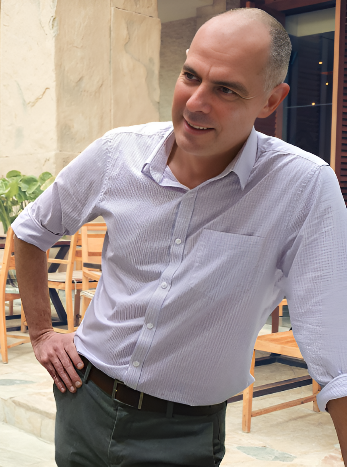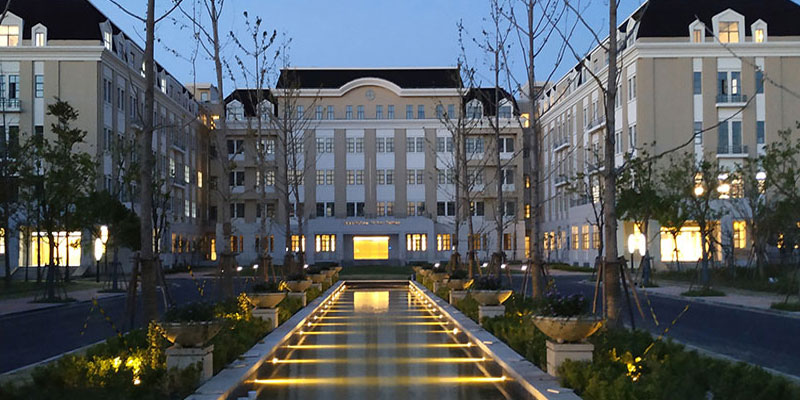学术报告
Frontiers in PhotoAcoustic Aerosol Research
报告题目:Frontiers in PhotoAcoustic Aerosol Research
主讲嘉宾:Dr. Tibor Ajtai
邀请人:张振东 副教授
时间:2025年07月10日(周四)14:00
地点:上海交通大学中英国际低碳学院主楼432会议室
报告人简介
Dr. Tibor Ajtai is a Senior Research Fellow at the University of Szeged and the founder and head of the Laser and Aerosol Research Group. He obtained his PhD in 2012 at the University of Szeged, where he developed a novel multi-wavelength photoacoustic measurement system and demonstrated its applicability in studying the spectral response of atmospheric aerosols. His main research interests include gas and aerosol photoacoustics, laser light source development, and highly sensitive spectroscopic techniques for practical applications. His scientific contributions have been recognized with several awards, including the Faculty Excellence Award of the Faculty of Science and Informatics (2015), the Bolyai János Research Fellowship and Bolyai+ (ÚNKP) Fellowship (2018–2021), and the Budó Ágoston Prize of the Eötvös Loránd Physical Society (2023). Over the past decade, he has published approximately 50 peer-reviewed papers, which have received nearly 1000 citations. He actively collaborates in numerous national and international research projects, including with Rice University (USA), the Max Planck Institute for Chemistry (Mainz, Germany), the Joint Research Centre of ISPRA (Italy), and the Karlsruhe Institute of Technology (Germany).
Aerosol Research Group. He obtained his PhD in 2012 at the University of Szeged, where he developed a novel multi-wavelength photoacoustic measurement system and demonstrated its applicability in studying the spectral response of atmospheric aerosols. His main research interests include gas and aerosol photoacoustics, laser light source development, and highly sensitive spectroscopic techniques for practical applications. His scientific contributions have been recognized with several awards, including the Faculty Excellence Award of the Faculty of Science and Informatics (2015), the Bolyai János Research Fellowship and Bolyai+ (ÚNKP) Fellowship (2018–2021), and the Budó Ágoston Prize of the Eötvös Loránd Physical Society (2023). Over the past decade, he has published approximately 50 peer-reviewed papers, which have received nearly 1000 citations. He actively collaborates in numerous national and international research projects, including with Rice University (USA), the Max Planck Institute for Chemistry (Mainz, Germany), the Joint Research Centre of ISPRA (Italy), and the Karlsruhe Institute of Technology (Germany).
报告简介:
Atmospheric aerosols are a major focus of current scientific research, primarily because of their adverse effects on Earth’s radiative balance and on human health. Among the various physical properties of aerosols, their light absorption spectrum is uniquely measurable in real time and carries vital information about their chemical composition, making it a key parameter for understanding both climatic and physiological impacts. Despite a broad scientific consensus that photoacoustic spectroscopy is the most suitable technique for accurate and reliable measurement of aerosol light absorption, the first multi-wavelength photoacoustic instruments capable of characterizing the absorption spectrum across the UV–Vis–near-IR range—critical for radiative balance assessments—have only emerged and widespread in the past decade. The Laser and Aerosol Research Group at the University of Szeged was the first to develop such an instrument and to validate its applicability for the quantitative analysis of aerosol absorption spectra across these key spectral regions. Furthermore, we were the first to reveal and quantify link between the atmosphere’s wavelength-dependent photoacoustic response and the offline-measured chemical composition, toxicity, and the gas- and particle-phase markers of atmospheric aerosols — a breakthrough that opens up novel possibilities for real-time source apportionment and health impact assessment. This presentation will provide a concise overview of the fundamental principles of photoacoustic spectroscopy. It will also demonstrate the Laser and Aerosol Research Group’s internationally unique measurement facilities, based on proprietary developments as well as the most advanced state-of-the-art technologies, which enable comprehensive characterization of the complete physicochemical parameter space of atmospheric and synthetized nano aerosols. The presentation will also highlight the group’s most recent research activities, including: photoacoustic investigations supporting emission-based fuel development; spectral source apportionment methods for real-time identification of atmospheric black carbon; photoacoustic analysis of atmospheric mineral dust; nanonization of pharmaceutical compounds; detection of illegal waste burning; water vapor flux measurements using drone-mounted photoacoustic systems; photoacoustic monitoring of climate-relevant gas species in both atmospheric and vehicular emission environments; the laser based fabrication active pharmaceutical ingredient (API) aerosol and for modelling diesel soot emission under controlled laboratory conditions; and the photoacoustic based particle evolution studies.





 友情链接 ---
友情链接 ---